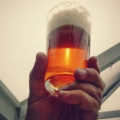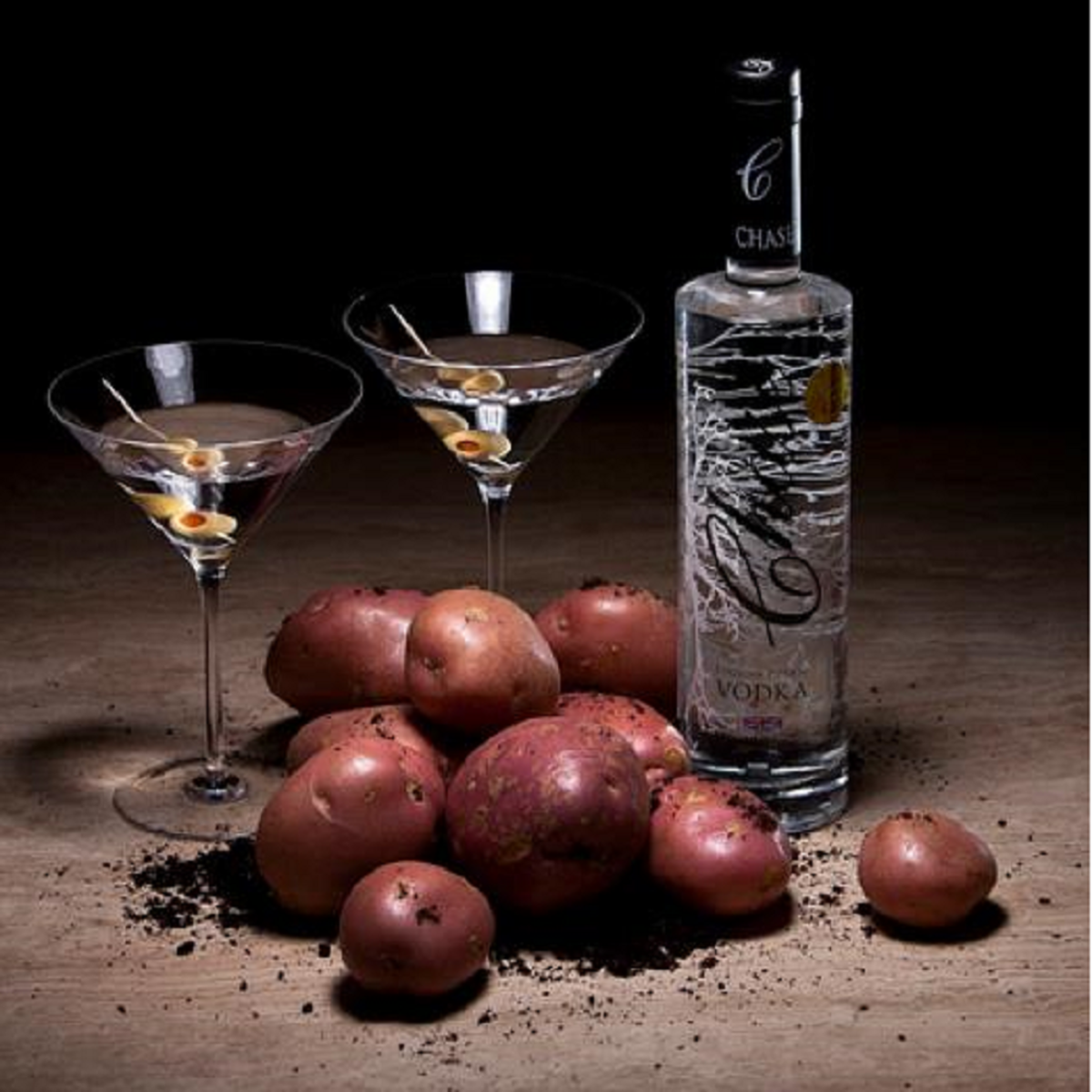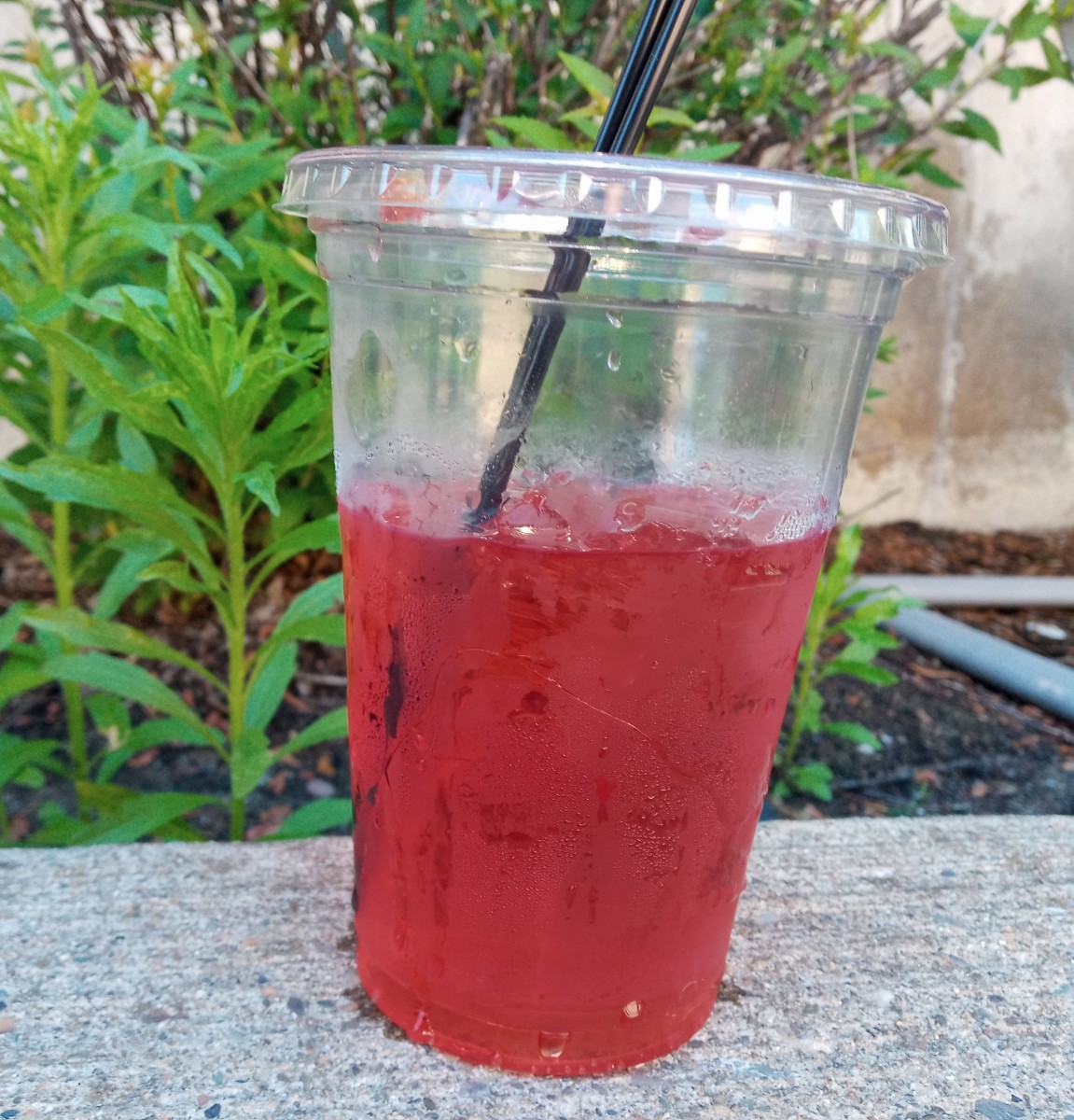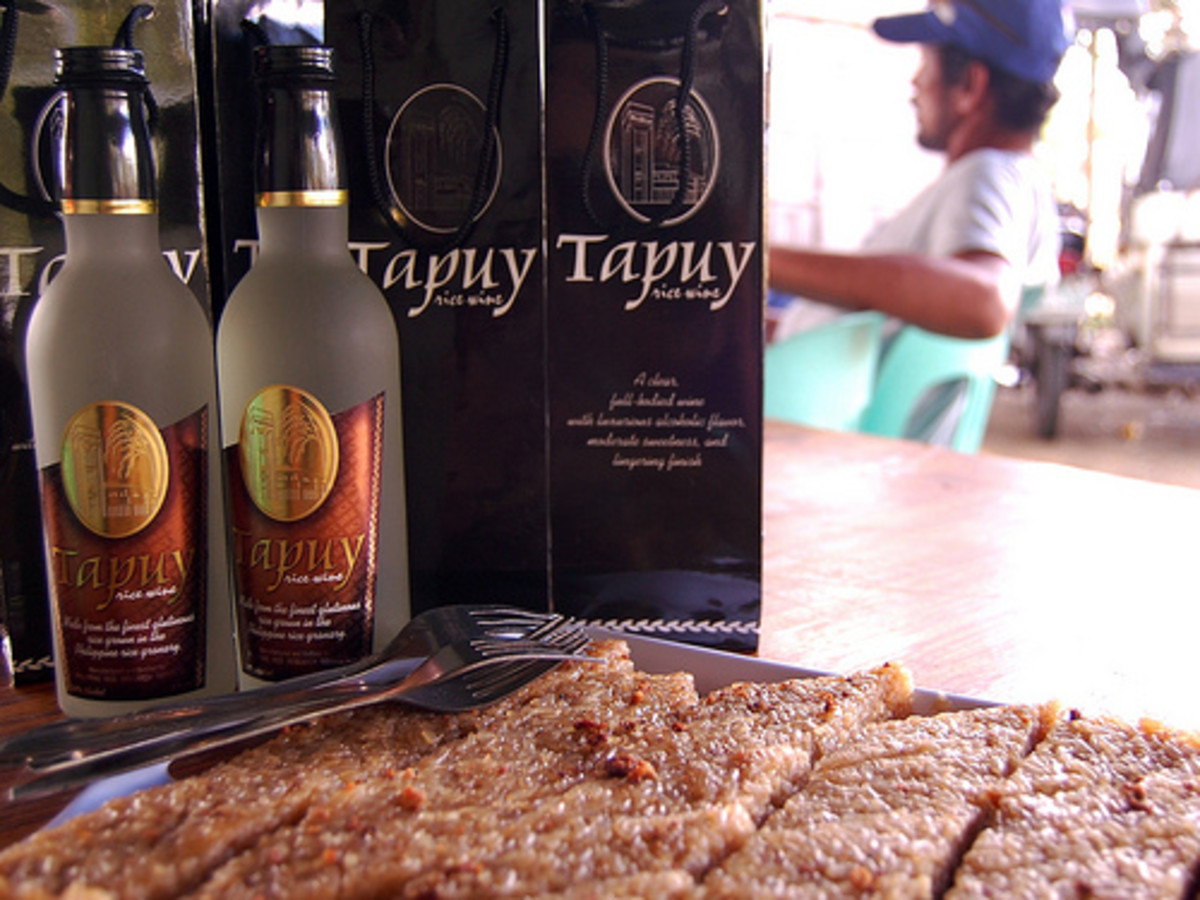How To Make Your Own Beer
Learning to make beer at home is a lot of fun, and it won’t be long before you come up with some homemade beer that tastes better than anything you’ll find at a specialty liquor store, but look, before you start making your own home made beer, you need to know just one thing; the first batch of homemade beer you come up with is going to be kind of flat, and it’s going to taste either really bitter, or really bland. Sorry, but if you want to brew your own beer, there really is a delicate art to it, and a kind of craftsmanship, and like with any art or craft, a lot of the learning process comes from trial and error, making mistakes and learning how to avoid making those same mistakes in the future. This is true of painting, of writing, of playing guitar, and it’s definitely true of home beer making.
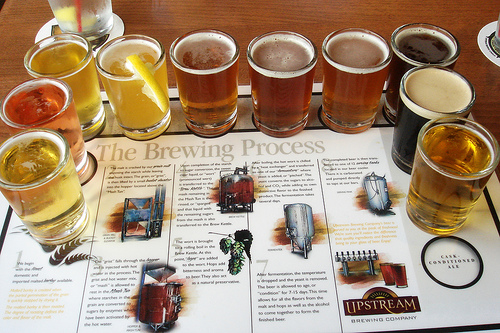
That said, once you get the ropes of how to make beer at home down, you’re basically free to experiment and try out all kinds of crazy things that no beer making company would ever dream of, simply because they need to appeal to a wide audience and can’t afford to experiment with crazy concoctions like beer infused with a touch of peach and nutmeg. Seriously, once you learn how to brew beer at home, you can make your own beer out of literally anything from a few simple specialty oats, to refried beans, or if you’re nuts, you could throw some shoe leather in there.
Just… don’t try making up crazy new recipes until you’ve figured out the basics, and whatever you do, don’t get discouraged. Rome wasn’t built in a day, and nobody ever became a master beer maker with their first batch.
Basic Beer Brewing Equipment
Okay, enough with the pep talk, let’s get into it. Here’s the basic beer brewing equipment you’re going to need if you want to learn how to brew beer at home..
- Airlock
- Boiling Pot
- Either a bottling kit, or a kegging kit
- Fermenter (basically a big bucket)
- Measuring cup
- Racking cane (A rigid plastic tube for siphoning)
- Stirring paddle
- Thermometer
- Hydrometer
- Turkey baster
No doubt, you’ve already got some of this beer making equipment lying around, but our advice is to go ahead and go with a beer brewing kit at first.
Home beer making is tricky enough to get the hang of at first without having to run around town with a shopping list in hand, so grab a beer brewing kit and get all your home brew equipment in one go, at least for the first batch or two.
Home Beer Making Ingredients
Now then, for the ingredients you’ll need to make beer at home…
Well actually, we can’t tell you exactly what you’ll need. There are a few common ingredients for all beers, but you’ll want to get online and search for a good recipe you think you’ll like, and then get the ingredients for it… That said, here are the common ingredients for people just learning how to make homebrew for the first time. You can just throw this together for practice, or you can get a good book on how to make homemade beer, as they usually contain plenty of great recipes…
- Malt extract
- Hops
- Yeast
- Water
- Sugar
Luckily, you can get the malt extracts and hops and all that in a home brewer’s kit, which, again, is a bit more convenient than having to shop around all day.
When it comes to the water, it’s really a good idea to go with a few gallons of distilled water if you don’t have a water filter yourself. When you brew your own beer with tap water, there are a lot of chemicals in that water, like chlorine and such, that can add funny flavours to your homemade beer. For people learning how to brew beer at home, this can be kind of confusing. “I got all the right beer making equipment from that beer brewing kit, I followed the instructions, but it still tastes lousy! What am I doing wrong?!”
Beer Making Ingredients
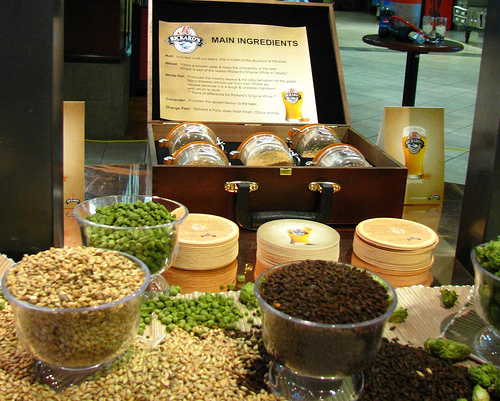
First Steps And Preparation To Make Your Own Beer
Now, before you do anything, make sure to clean and sterilize all your homebrew supplies. Just like the chlorine in the water, odd bits of bacteria and such floating around in your fermenter can be really bad for your beer’s flavour.
When you sanitize your home brew supplies, the first thing you want to do is clean everything with bleach and boiling water. Scrub it out really good with a sterile cloth, and then rinse it out a few times with some more boiling water. Your friends are probably going to be telling you “It’s clean already!” but you can never be too sure with homebrew supplies. Home brewing beer is a slightly more delicate operation than mixing a jug of Kool-Aid. The bleach can ruin the flavour of a perfect batch.
If you have an electric dishwasher, use that for the rinsing process, as the steam sanitation cycle is a great help.
Okay, now it’s time to make the “wort”. Wort is basically your pure, raw beer liquid before fermentation. When you’re learning how to make beer, again, you’ll want to go for a simpler recipe until you really get down the basics of how to make your own beer and you can experiment a little more.
Making Wort
To make the wort, pour three gallons of water into your brew pot, boil it on the stove, and then put two gallons of cold water in your fermenter. Once the water is boiling, take it off the heat and throw in your malt extracts. Stir it in until it’s fully dissolved, and then start boiling it again. Now you should boil it for about ten to twenty minutes. Keep monitoring your heat levels, because the wort has a tendency to foam up and spill out of the brew pot.
Now, once ten or twenty minutes have passed, gently stir in the hops, and keep boiling the whole thing for about one hour, stirring now and then.
Making Wort

Cooling The Wort
Okay, now you’re ready to take the wort off the stove. You’ll want to cool it very quickly to avoid contamination, so, if you have a large enough sink, you’ll want to put your brew pot in there with some ice and cold water… Don’t pour it, just set it in there. If you don’t have a sink big enough for the job, any sanitized container or basin big enough to hold your brew pot will do. Once your brew pot is cool enough to touch without frying your hands, it’s time to…
(Too) Vigorously Fermenting Beer
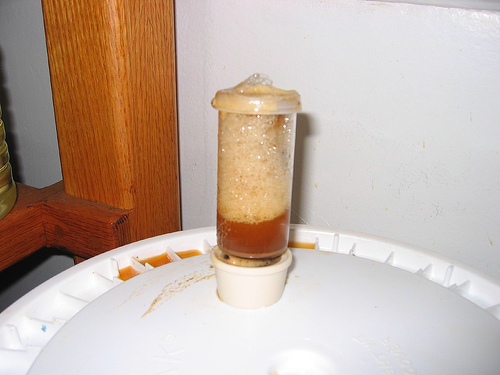
Ferment The Beer
This is the good part of how to make beer: Turning it into booze. We’re not here to talk about non-alcoholic beer, we’re telling you how to brew beer that will taste great and will get you good and buzzed, so this is the most important step!
Now grab a funnel and strainer, put the strainer in the funnel, put the funnel into your fermenter, and start pouring the cooled wort slowly into the fermenter.
Now check the temperature with the thermometer. If your wort isn’t room temperature yet, let it cool down a bit more before adding the yeast. If it’s ready, just dump the yeast right in there, and stir it gently to get some oxygen flowing for the yeast.
Top the fermenter off with your airlock and your stopper, make sure it’s sealed tight, and then stick it in a cool, dark place. It doesn’t need to be pitch black, just anywhere where sunlight and heat won’t affect the fermentation process (why do you think they call it moonshine, anyways?).
Now just leave it for somewhere between a week and ten days. Check on it now and then, make sure the temperature doesn’t get too high.
To tell if your beer is ready for the next step, take a look at the airlock. If it’s producing less than one bubble every minute, it’s time to bottle this booze. You can make sure by looking at the yeast. If it’s settled at the bottom, and your beer is clear, and not all hazy and cloudy, then go ahead and start bottling.
I said start bottling, not start drinking!
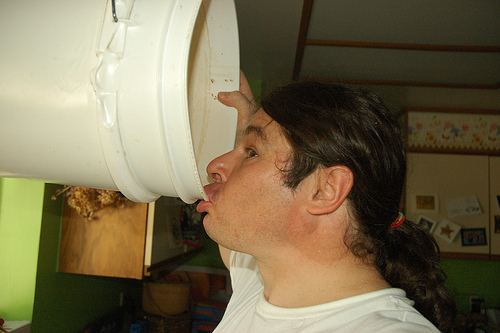
Bottling Beer
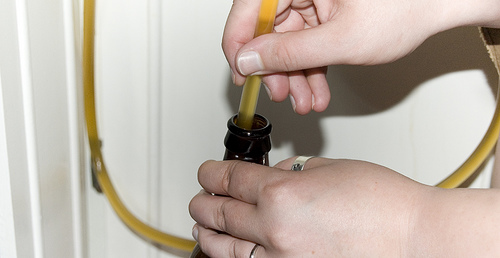
Priming and Bottling
Congratulations! You officially now know how to make your own beer!
Okay, now before you and your buddies all get tanked on high-grade sauce, you’re not quite ready drink it just yet. Here’s the last step in learning how to make beer at home: Priming and bottling.
Priming is the process of adding some sugar to the beer before bottling. The remaining yeast will convert this sugar into carbon dioxide in the bottle itself. Don’t worry, this is the last step in how to make homebrew, and very soon you’ll be able to slap a label on it and get good and toasted.
We should note that this depends on your preferences. Sugar does add the carbonation we all know and love, but some people don’t like how it affects the flavour. In Germany, for instance, the act of sugaring your beer is generally frowned upon, and they tend to prefer non-carbonated dark ales. It’s up to you, but most beer drinkers do tend to prefer the carbonation.
Okay, so take three fourths of a cup of corn sugar and two cups of water and mix them together in a small sauce pan. Boil this mixture for about fifteen minutes, dissolving all of the sugar.
Pour this sugar water into whatever you’re using for your bottling bucket, and, using the siphon, transfer the contents of the fermenter into the bucket, making sure not to stir up the used up yeast that has accumulated at the bottom of your fermenter.
Now stir the contents up, and using a spigot or the siphon tube, transfer your homebrew into your clean and sanitized bottle, one bottle at a time. Cap the bottles off, leaving an inch of air at the top.
Okay, we lied, though. You’ve done the hard part, but there’s one small step left in learning how to make homebrew. Take all your home brewing equipment and sanitize it, pack up your home brew supplies, because here’s the last thing you need to know for learning how to brew beer at home…
Bottle Conditioning
We swear, this really is the last step in learning how to brew beer at home! Don’t worry, you’ll be able to get you and your friends good and liquored up in no time! Bottle conditioning just finishes off your beer, conditioning it perfectly for a good patio party or a game night.
First, you should put your bottles somewhere warm. Somewhere around 70-80F, or 21-27C. This should take about one week. After the week is up, pop a bottle open to test for proper carbonation. Don’t worry, it’s safe to drink and everything, so just give it a sip. If it’s flat, give it another day or two.
Now that it’s carbonated, all you have to do is chill it.
Aging Your Home-Made Beer
You can age your beer if you like. It depends on the flavour you’re going for. For home brewing beer, the general idea is to age darker beers for awhile, and to drink lighter beers before too much time has passed.
Yes, not everyone drinks it straight away you know! Patience has always been a virtue.
DRINKING YOUR HOME MADE BEER (Yes, the bit you've all been waiting for...)
It’s advisable that you pour your beer into a glass, leaving about a centimetre of brew at the bottom of your bottle. That stuff at the bottom can contain yeast sediment, which can give you bad gas… Not exactly the best way to impress the next girl or guy you bring home “Yeah I can teach you how to make your own beer yourself if you like *BUUUUURP!*”
Making Your Own Beer on an Ongoing Basis!
Now that you’ve learned how to make homemade beer, you’ll be ready to design your own signature flavours. Your first batch won’t be it, of course, but give it a few more tries. Any store that sells beer brewing equipment might even have some bottle labelling equipment if you want to make a few bucks in the microbrew trade, or if you just want to give your friends pretty much the most impressive personalized birthday gifts ever.
Remember, home brewing is a delicate art. Don’t get discouraged, but do be willing to experiment and develop your own style. We’ve already got a dozen dark and light brews out there, so see if you can come up with a whole new flavour that nobody’s ever even thought of before. Good luck with making your own beer!
This hub brought to you...
by Julie-Ann Amos, professional writer, and owner of international writing agency www.ExquisiteWriting.com
Why not create your own HubPages? It's fun and you can make revenue from Adsense and other revenue streams on your pages. JOIN HUBPAGES NOW
This work is licenced under the Creative Commons Attribution-Non-Commercial-No Derivative Works 3.0 Unported License. To view a copy of this licence, visit http://creativecommons.org/licenses/by-nc-nd/3.0/ or send a letter to CreativeCommons, 171 Second Street, Suite 300, San Francisco, California94105, USA.

